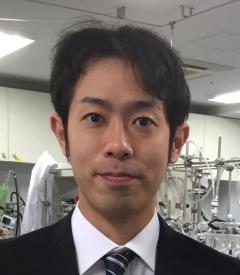A research paper on Nature: Photocatalyst that can split water into hydrogen and oxygen at a quantum efficiency close to 100%
2020.05.29
A research team led by Shinshu University’s Tsuyoshi Takata, Takashi Hisatomi and Kazunari Domen succeeded in developing a photocatalyst that can split water into hydrogen and oxygen at a quantum efficiency close to 100%. The team consisted of their colleagues from Yamaguchi University, The University of Tokyo and National Institute of Advanced Industrial Science and Technology (AIST).
C2 synthesized at room temperature: Nanocarbon formation and the evidence for quadruple bonding character
2020.05.04
Diatomic carbon, or C2 was first discovered in 1857 and has since been found in carbon vapor, comets, stellar atmosphere and interstellar matter. However, it has proved frustratingly difficult to study C2 because it only exists at extremely high temperatures, above 3500°C. Since 1930, several experimental methods have been developed to generate C2 under extremely high energy processes, and it has been reported that C2 exhibits singlet dicarbene (double bond) and/or triplet biradical (triple bond) behavior.
Recent theoretical studies suggested that C2 at the ground state should has a singlet biradical (quadruple bond) character. These opposing theoretical and experimental findings have sparked an extensive debate about the molecular bond order and electronic state of C2 in the scientific community.
Dr.Yu Kitazawa is selected to the CAS Future Leaders Program 2020.
2020.04.30
Prof. Dr.Yu Kitazawa is selected to the CAS Future Leaders Program 2020.
This educational program is for Ph.D students and postdocs, organized by a division of the American Chemical Society, CAS. Young scientists from all over the world learn skills that science leaders need by collaborating with professionals of CAS.
A research paper on Nature Communications.
2019.06.20
A research paper is published in the Nature Communications
A research group of Dr. Keita Nomura, Dr. Masanori Yamamoto, Dr. Atsushi Gabe, Prof. Hirotomo Nishihara, Prof. Takashi Kyotani from Tohoku University, Nissan Motor Co., Prof. Hideki Tanaka from RISM, Shinshu University, Prof. Minoru T. Miyahara from Kyoto University and Prof. Yuta Nishina from Okayama University found that refrigerant molecules adsorbed nanosponge (elastic material equipped with small nanopores) immediately get cool when the molecules are squeezed and evaporated by adding mechanical pressure on nanosponge. When there are no mechanical pressure, nanosponge automatically recover its shape and make heat while the refrigerant molecules are re-adsorbed into nanosponge. Applying this system enables to build a high efficient heat pump with environmental friendly water or alcohol as refrigerant. This research is published in the online journal Nature Communications.

